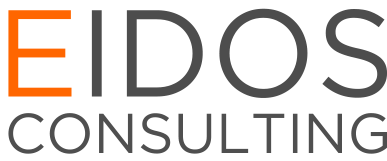I recently spoke at a summit around the importance of identifying the skills needs of a business and how to identify where gaps exist in the skills you need, versus the skills you have access to. What followed was some interesting discussion that was centred around skills gaps, but actually began to wonder into a conversation around attributes. In many cases people package skills and attributes under the single banner of ‘skills’, however I would like to use this blog post as an opportunity to discuss the clear distinctions between the two, where attributes are needed in place of skills, and how the approach to developing each is very different from the other.
So how do we define a skill and an attribute?
Skill – the ability to use one’s knowledge effectively and readily in execution or performance.
Attribute – a quality or feature regarded as a characteristic or inherent part of someone or something.
These are the dictionary definitions, however I prefer a definition that I came across recently that said ‘Attributes are inherent to our nature, skills are not something that is inherent to our nature.’ This may initially be a bit ambiguous, but think of it like this; Skills are learnt – attributes are a result of nature and nurture. To provide an example, think about the skill of being able to use a piece of computer software. You can develop the skill (for the most part) by attending a training course that lasts a couple of hours and learn almost everything you need to be proficient in using it. However the attribute of patience to stick with it when a problem arises with that software is not something that can be learnt quickly – you are either a patient person or you are not. This is something that will take time and experience to develop. It is also important to understand that everyone has every attribute to a greater or lesser extent, whereas no one is in possession of every skill.
So, what is the importance of both in a business context?
The need for skills within business is clear to see. Without the skills required to deliver to your clients, your business would fail. Having a skillset informs your employees what they need to do to get the job done, and how to do it.
The importance of your employees having the right attributes comes to the fore when experiencing times of change or times of difficulty. Indeed, the focus on attributes increases as you move to roles of higher responsibility. This can clearly be seen in how we approach job specifications for more senior roles, with job adverts focussing more on key attributes, rather than skills, as the roles become more senior.
As a business you need to recognise where a skill needs to be applied and where an attribute is needed, but also you need to recognise how each is developed. If you are struggling to promote skilled workers into management roles, this may well be the reason why.
Skills
Skills are developed through learning. Traditionally this may take the form of encouraging your employees to attend a training event, but may also come from mentoring, job shadowing, demonstrations or even reading an instruction. Skills become more ‘polished’ through applying them, so after completing a training event, you would allow your employee the opportunity to put that new skill to use, until they can successfully apply the skill repeatedly without support. Some skills are perishable, so may need regular practice to maintain the individuals skill level. This approach should be recognised in your approach to developing and maintaining workforce skills (such as a training plan or competency framework).
Attributes
Attributes require considerably more time to develop. Sending your employee to attend training will not do in this case – rather you should think about development activities such as work placements or coaching to develop an attribute. As attributes can only be improved through experience, the development of them takes considerably longer than a skill. An example of this is leadership – attending a leadership training course may give you some knowledge on the subject, but you will only know how you perform in a pressurised leadership role when you have experienced it first-hand. This approach should be recognised in your talent development process.
Both skills and attributes contribute to the complex nature of employee capabilities. As a business you should recognise the need for both in varying measure, and depending on the individual employee and their role. In the same way that you monitor employee skill level, you should also recognise the attributes that you need as a business, and how these are distributed amongst your workforce. This will allow you to call upon key attributes when needed and to recognise where your strengths and weaknesses lie.




